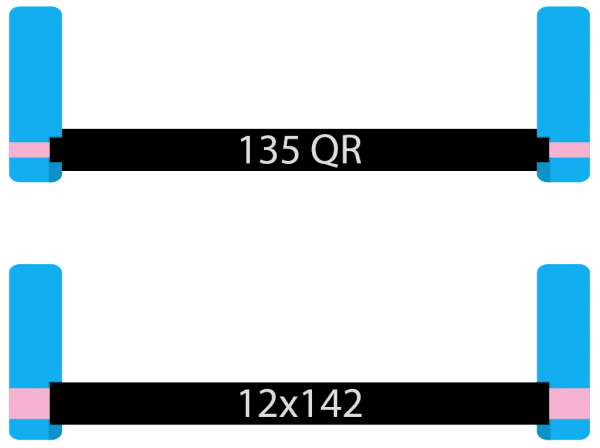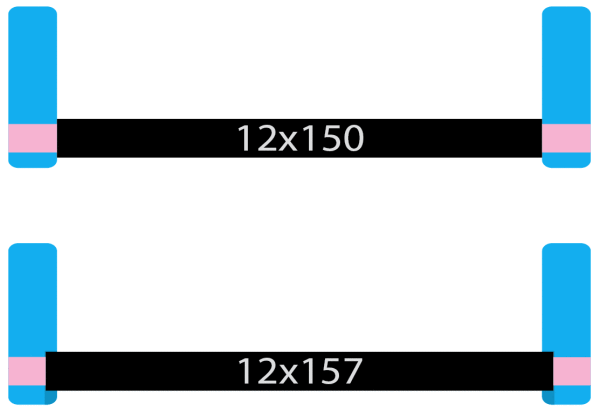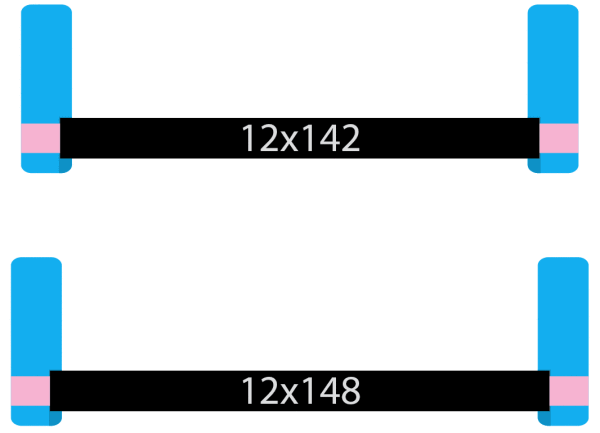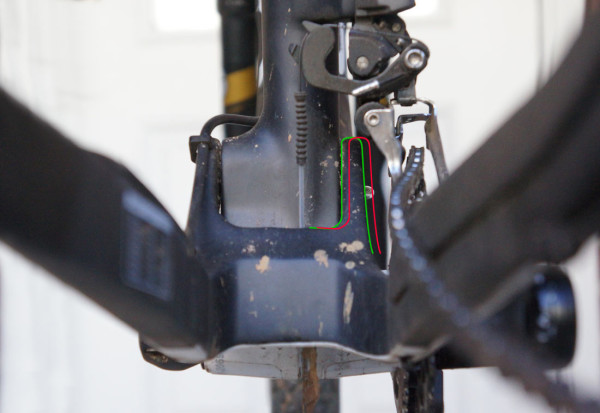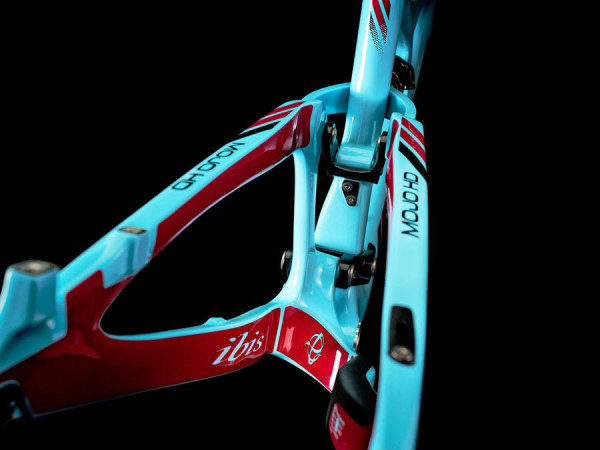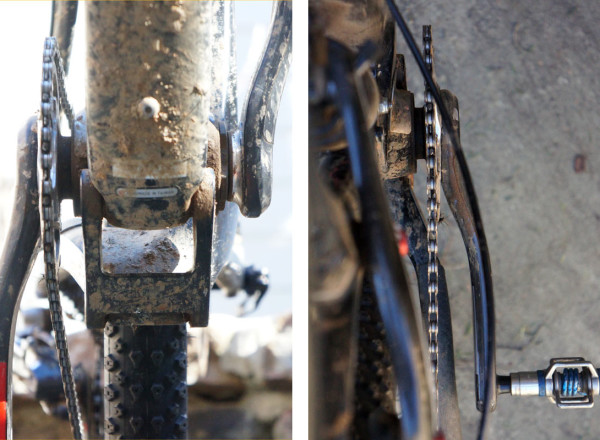Just when you thought things might be settling down for a bit, with 650B wheels all but taking over the mid/long travel segment, 29ers owning the XC field and 26″ bikes relegated to entry level, youth and gravity bikes. Alas, the 148mm thru axle that seemed to be a novelty when introduced on Trek’s 2015 Slash and Remedy bikes may soon be ubiquitous.
But why?
Surprisingly, there are a lot of reasons why this makes sense. Ones good enough to actually justify the annoyance of another axle standard that’ll require new hubs and new frames to take advantage of. Ones that will make mountain bikes better in quite a few ways. And while most companies we talked to wouldn’t provide details of their own forthcoming products on the record, some would speak in generalities. We have it on good authority from some of the biggest parts suppliers that the 148mm axle standard will become the major new feature of 2016 bikes from almost every major company. SRAM is on board since they’re providing the wheels for Trek’s new Remedy 29er, the first bike to use Boost 148. And Norco told us outright they’re “planning … a couple of new platforms to use this standard.”
Here’s what we learned…
FIRST OFF, WHAT IS BOOST 148?
In the beginning, we had 135mm quick release hubs. The 135mm number is the measurement between the dropouts, not accounting for the slot that the hub’s axle ends sit in. When 12×142 came about, it was simply a new axle size, not a new standard per se. It just opened up the internal hub diameter to allow for a larger diameter thru axle to be used. This made the rear end stiffer and, since it was fully enclosed by and threaded into the frame, eliminating any chance for the hub to move in relation to the frame.
All was good…until 29ers came along and lengthened the distance from the hub to the rim. This had the effect of decreasing the spoke bracing angle, narrowing the triangulation and generally resulting in less stiff wheels. The solution Trek developed was to widen the hubs.
But wait, why not just use the 150mm standard that’s already on downhill bikes?
Because, the 12×150 axle sat on the inside face of the dropout area, without any notch in the frame to hold it in place. That meant you had to hold the wheel in line with the holes and slide the thru-axle into place. It was a pain, which is why every bike we know of went to the 12×157 standard. It’s the same 3.5mm extensions the 142 uses to slot into the dropouts, just with a wider axle to get wider wheels. It’s not as big a deal on DH bikes since many of them are running shorter 7-speed cassettes. That, and you’re not pedaling all day on them. In reality, there’s a massive 15mm difference between 157 and 142, and it’s just too wide for normal riding. Thus, Boost 148 was born:
So, the new Boost 148 really and truly is a new standard, not just a new size, since it requires a new hub shell and new frame. It is similar to 12×142 in that it’s using the same measurements from cassette to dropout and rotor to dropout, as well as the same 3.5mm hub catches in the frame. Where it becomes an entirely new hub is that extra 6mm in the center of the hub shell, widening the entire system.
On the one hand, this is good because it will use existing standards for disc brake mounting and spacing, as well as cassette mounting and spacing. On the other hand, it’s going to cause headaches and cursing because it will require an entirely new hub shell. There is no simple end cap swap as with 12×142, the Boost standard will be an entirely different hub shell. And it’ll require a new frame to put them in.
But, as you’ll see, it may just lead to much, much better bikes in the very near future.
WHAT’S TREK USING IT FOR?
Since they started the party, we’ll start with how they’re using it. Trek has stated that the reason for this new design is to increase the space between the flanges of the hub, making a stronger 29er wheel. At the moment, it’s only on the Remedy 29er -the 27.5″ Remedy and all other models keep 12×142- but we suspect that’ll soon change. Why was getting a stiffer, stronger wheel so important?
Well, once you’ve ridden a good set of carbon-rimmed wheels (you can pry ours from our cold, dead hands!), it is really hard to go back to riding an alloy wheelset. Once you have that baseline for a better wheel, you can really feel the shortcomings of a less expensive, less stiff wheel. Trek thought that all riders, regardless of how much money they can spend, should get the same ride quality, and they chose to stiffen up the wheel by increasing the triangulation of the spokes rather than rely on more expensive carbon hoops to do the job. If you have ever ridden a 29er wheel built to a fat bike hub, you know that as proof of concept, wider flanges can have a huge effect on wheel stiffness.
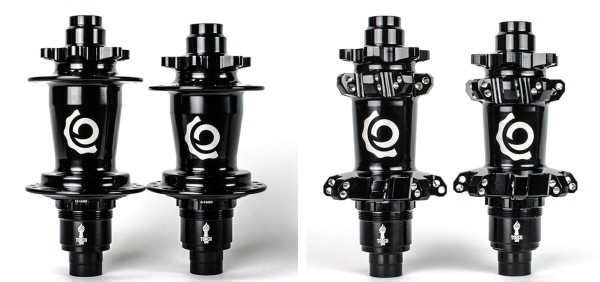
And this small width increase apparently makes a massively noticeable improvement. Industry Nine’s already starting production on 148mm rear hubs and claims 10% to 15% better stiffness. In fact, I9’s Jacob McGahey says their goal is to have the most comprehensive coverage of axle options, and they were the first aftermarket company to offer this new size.
Already, they have their flanged Classic J-bend hubs available in 148 as well as any of the 32-hole wheelsets available now, which includes the Torch hub wheelsets. “The only ones we don’t offer are the 24-hole Ultralight wheelsets yet, but eventually our full line will be available,” he said. “We ramped up pretty quick because we saw the possibilities it offered for the flexibility it offered to frame manufacturers, and of course we want our wheels to be available to anyone that’s using that standard. It instantly adds almost 15% stiffness to the wheels, and it’s only a 6g weight penalty compared to a 12×142.”
If Trek got the ball rolling, others will only be fashionably late when their 2016 models hit the showroom, and they’ll be doing a heck of a lot more than just claiming to have better wheels.
STIFFER FRAMES, BETTER SUSPENSION
Going wider in the back also has other advantages. Following the basic engineering principle of triangulation, the wider you can make the triangle’s base, the stiffer it will be, all other things remaining constant. Imagine if engineers had another 6mm of axle width for the main pivots. Same triangulation principle, just at the pivots, which puts less torsion on the bearings and gives the pivot more leverage over perpendicular rotational torque (aka rear end frame flex).
Shown above on the 2015 Orbea Oiz, the red line represents what moving the driveside pivot bearings out from the current (green) location. It looks small, but it could yield massive improvements in frame stiffness on designs relying on multiple pivot points. It’s worth pointing out that some designs, like the Oiz, already pushed the non-driveside pivot bearings out as far as they’ll go without risking crank arm clearance, so we may only see 3mm of change on some bikes.
But 3mm could be a lot when taken as a percentage, like on the lower linkage pivots on the Ibis Mojo. (Editor’s note: images ALL of the bikes used here are for illustrative purposes only and are not intended to show any future products. Don’t read anything into them.)
Even the Niner JET 9, which sets their lower linkage’s bearings pretty wide, could push things out slightly, and they’re one of the few brands to give us a little something on the record.
SHORTER CHAINSTAYS (OR BIGGER TIRES)
If you have a modern 29er, take a look at the space between the chainrings and the rear tire. There is a lot going on in that small amount of space, much to the chagrin of bicycle engineers everywhere. It is a constant challenge to reduce chainstay length for better handling, yet provide ample clearance for the wide variety of drivetrains on the market and simultaneously maximize tire clearance. Many engineers we know will start an entire bike model by first identifying the tire clearance and drivetrain clearance requirements, and designing this area first. There are also regulatory requirements of at least 6mm of tire and crank clearance to the frame (anything rotating), making it harder.
Adding 3mm of extra chainline width to this area is a mile to these engineers. Just simply moving the chainline out could instantly shorten chainstays by 5-10mm, given the same tire and chainring sizes. Conversely, it could keep chainstay length the same, and allow clearance for much wider tires. That seems to be exactly what Niner’s thinking when we got sales and product managers Mike Gann and Barrett James on the line:
“We’re familiar (laughs), and there are some credible benefits that have specific applications in 29er. Chainstay length, clearance in the front derailleur area, etc. With the extra 3mm you don’t have as many challenges in keeping frame stiffness and it lets you shorten the chainstays. The drivetrain gets to move out 3mm per side, which means the added real estate can be used for mega tire clearance, or we could use the extra room to shorten the rear end. And then there are the benefits Trek’s already mentioned, like wheel triangulation and wheel stiffness. You’ll see us aggressively look at it for development projects.”
Wolf Tooth’s Brendan Moore says they’ve been talking to a lot of brands and foresee other uses for the extra room:
“We think, for several reasons that we can’t discuss, that 650B+ is really going to take off. Suffice to say, a healthy 650B+ tire fits nicely in a 29er bike, which gives you the stability and fun ride without the oversized 29+ tires. This makes me think Boost 148 is here to stay.”
And why would you want drastically bigger tires? If you haven’t ridden a fat bike yet, you’re in the dark about what huge tires can do for traction. It’s insane. Now, take that same root ripping, centrifugal force defying grip and stick it on a long travel enduro bike and you become unstoppable. Un. Stop. Able.
THE CHANGE TO CHAINLINES
When you push the cassette out 3mm, something has to be done to correct the chainline. SRAM made a custom spider with 3mm offset to line things back up. It’s likely new bikes using Boost 148 will have a similar solution installed, but what if you’re just getting a new frame and building it up yourself?
Fortunately, you won’t need a new crankset (see next section), but may need a new chainring or spider. The standard centerline measurement goes from the center of the BB to the center of the chainring teeth, and the current standard is 51mm.
Aftermarket brands are already on board, either by default or with new products.
“What SRAM did was move the chainline from 49mm out to 52mm,” says Moore. “Typical chainline on mountain bikes is about 48 to 51mm. The center of a 10-speed cassette should sit at 50mm, and ideally the chainline should be within 2mm of that centerline. Cog to cog spacing is about 4mm in the rear, so a change of a couple millimeters in chainline isn’t more than half a cog space and isn’t really that big a deal when it comes to shifting. Where it really starts to matter is having the chain clear the tire when you’re running a really fat tire (Ed. – Or it’s on the smaller of a double chainring). Our chainline right now is already 50mm, so we’re pretty far out, but Wolf Tooth will likely offer something optimized to make sure tire and chainstay clearance are as good as possible.”
Meanwhile, AbsoluteBlack’s founder says his chainrings already had 2mm more offset than a standard SRAM ring, so they’ll be fine without any changes.
There’s also a chance the front derailleur mounts will need to move, and on a new frame designed around Boost 148 there’s little doubt they’ll need to be direct mount and the position will be optimized. Round seat tubes relying on a traditional clamp-on front mech may have some issues getting the cage to move far enough out. Time will tell.
ANY BACKWARD COMPATIBILITY?
One nice thing about the new standard is that the BB shell width remains the same, as do the crank arms and their current Q factor. With more modern crank production methods, arms have slimmed down over the years since Shimano declared the 51mm mountain bike chainline standard. Since Boost does not use a different BB shell standard, we could see backwards compatibility on bikes that have replaceable swingarms. Those companies will hopefully offer replacement swingarms or dropouts for their existing 29er bikes that will move to Boost 148 spacing and wider tire clearance.
UPDATE 1/1/15: After reading our article, SRAM chimed in with a little background on the Boost 148’s development history and their own chainline recommendations:
“Boost 148 was something SRAM has been wanting to do for a very long time, but up until Trek being willing to dedicate a bike platform to it, SRAM never had the chance to make it a reality. But with SRAM and Trek partnering up, they came up with the first bike to have this new interface (Remedy 29er in MY15).
Boost148 is a complete system. You must have the front and rear chainline move out by the corresponding 3mm. Rear end gets 6mm wider symmetrically and the front chainline moves out 3mm to correspond with rear chainline movement. SRAM 1x systems have a chainline of 49mm. A SRAM 1x Boost148 system has a chianline of 52mm. 50mm or 52mm is not correct for a SRAM 1x system, and you will have compromised drivetrain performance with any other chainline.
SRAM is THE component brand that brought Boost148 to the market. We are the first company to have wheels and cranks to support this new standard. We will continue to expand our offering moving forward as well.”
ANY DOWNSIDES?
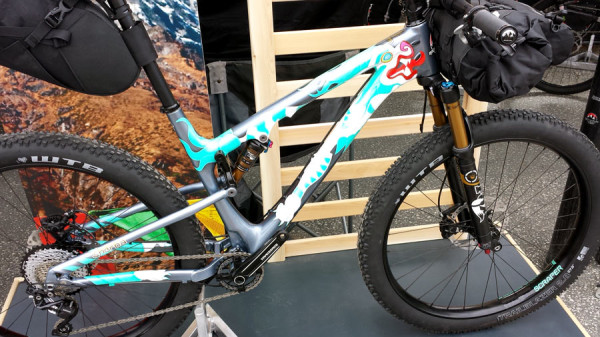
Well, you’ll need to buy a new bike, or at least a new rear triangle, and new wheels. Those can be big downsides, and (for now), at least one person we spoke to feels your pain.
Rocky Mountain, which showed off their Sherpa adventure mountain bike built on oversized 27.5 x 2.7 tires, seemed the prime candidate for adding the concept to the middle wheel size. So, we pinged their marketing guy and all-around shredder Andreas Hestler: “On the Sherpa we don’t have any comments, it’s a question up in the air for us, so we don’t have much to add…Currently, we have no plans to change it.”
Regarding the pros and cons of the system, Hestler said “We’re watching and waiting. Certainly it’s worthy to think of making 29″ wheels stiffer but adding weight isn’t a good way to make 29ers better. What about just bigger hub flanges? Flaring the axle will increase heel rub, and I’m a prime (example of one) whose heels scar the chainstays. What if my heel is actually not making it around?”
His final comment should please a lot of folks: “Another change, really, is that what the bike industry needs?”
THE TAKEAWAY
We think the 148 standard is not just about wider wheels, although that is certainly a benefit. Boost 148 helps give an extra 3mm of chainline, which helps with two things for manufacturers. First, as wheels have become larger in diameter, it has been much harder to package them with a short chainstay. Moving chainrings out 3mm seems like a small thing, but is an enormous change to the engineers trying to snake a chainstay between the drivetrain and the ever-increasing width of a tire. Second is that it can provide proper chainline clearance for larger tires in the 3″ range. Being that Trek is the initial public face of 148, and there are already leaked reports of a 3″ tire from Bontrager, this system would be enough to allow for proper chain clearance to this mid-fat segment that was started by the Surly Krampus.
So, it’s coming for the rear, but what’ll they do about the front? Stay tuned for Part 2!

